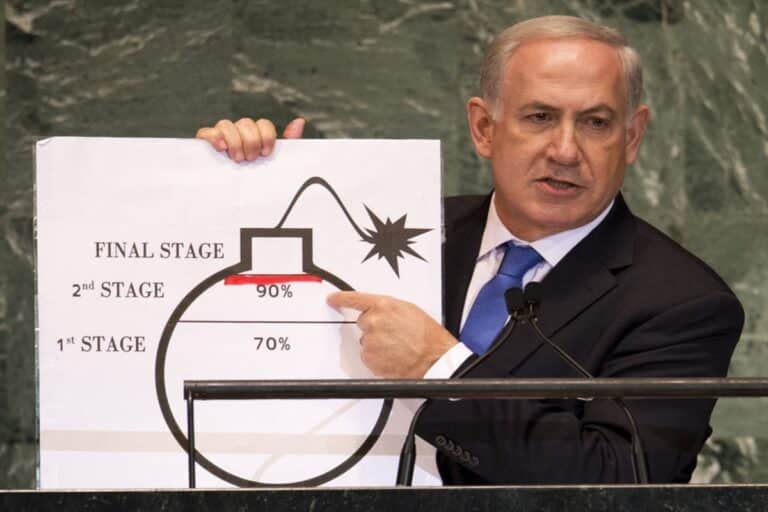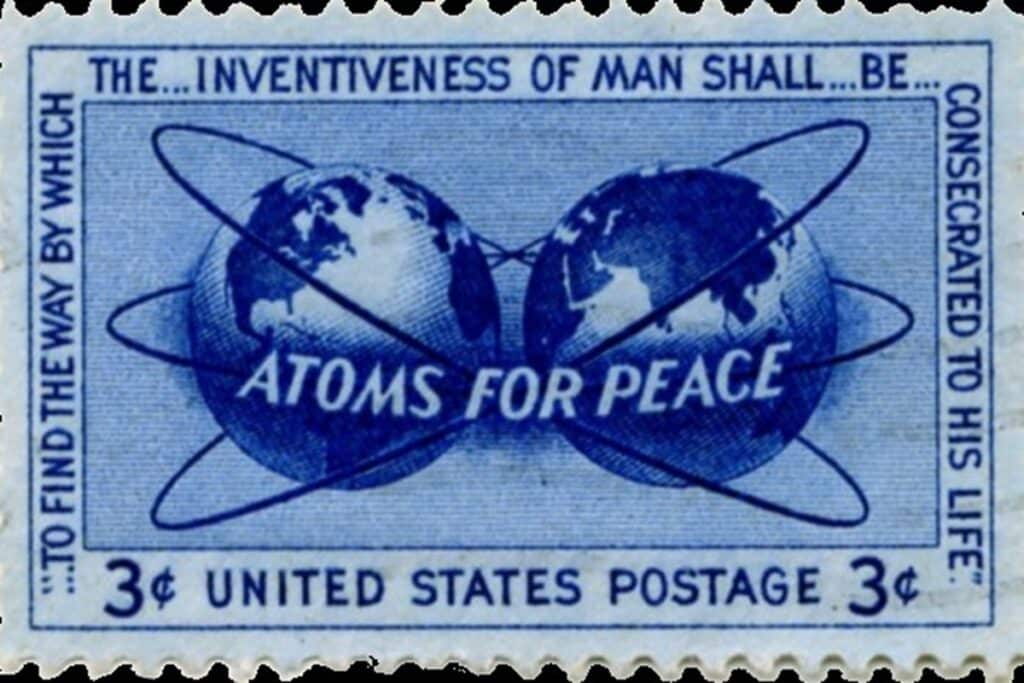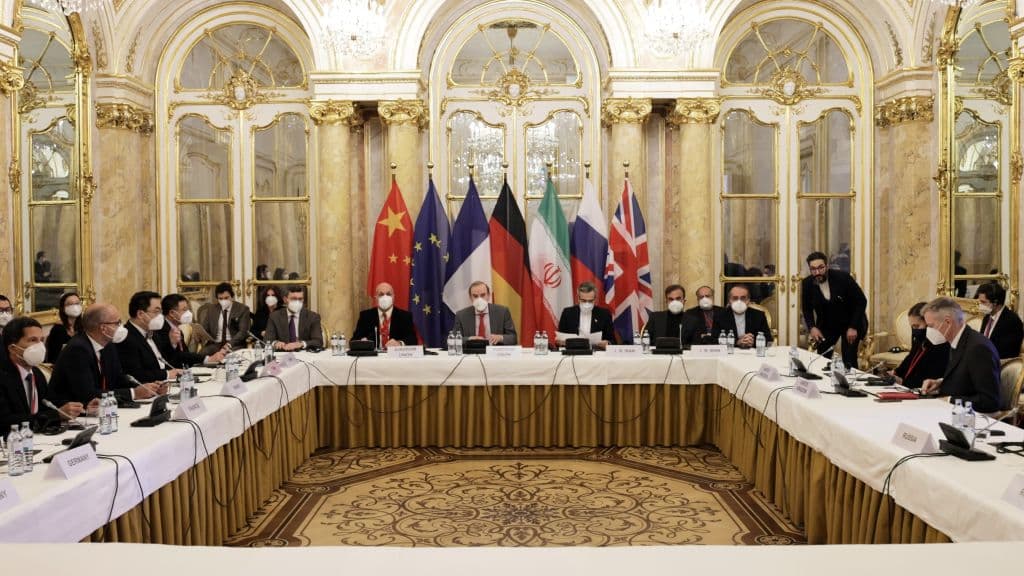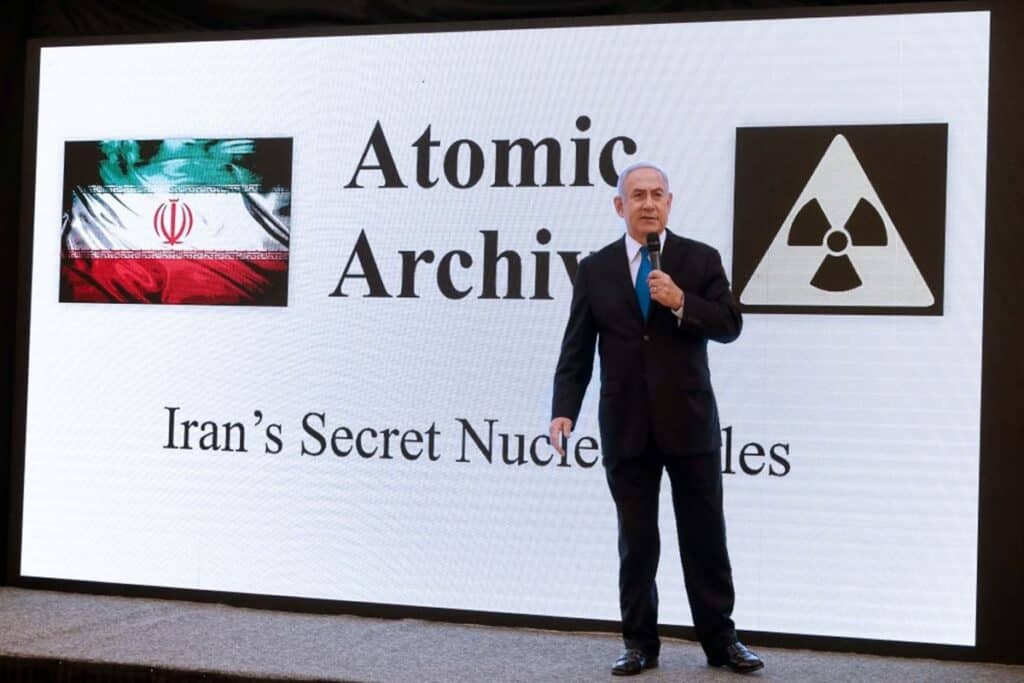
Israel struck Iran this past week because of the threat it said the Islamic Republic’s nuclear program posed to the Jewish state and the entire world.
Israel had been warning about Iran’s nuclear program for years and threatened to act if it wasn’t dismantled. Those threats were actualized this past week, as talks aimed at reaching a deal on the matter hit a brick wall.
What changed, and why did Israel decide to strike now?
To understand that, we need to understand how Iran’s nuclear program got to where it is today.
How Iran’s nuclear program got its start
Weirdly enough, Iran’s nuclear program has its roots in the United States of all places.
Back in the 1950s, Iran wasn’t ruled by the Islamic Republic that runs it today. Instead, it was a parliamentary monarchy, headed by Shah Mohammad Reza Pahlavi. Pahlavi ran Iran as a largely secular country and was friendly with Israel and the West.
The Shah pushed for reforms in many fields, aiming to modernize the country and draw closer to the West, but this angered conservative leaders in the country. As dissent increased, he launched brutal crackdowns on several political factions, fanning the flames even further.
As part of his modernization plans, Pahlavi signed an agreement with the U.S. in 1957 on Co-operation Concerning Civil Uses of Atomic Energy. As part of the deal, the two countries agreed to exchange information about how to design and operate nuclear reactors and use them for medical and scientific research.
The U.S. also agreed to provide Iran with enriched uranium and reactor equipment, while Iran agreed not to take any steps toward pursuing a nuclear weapon. In private, however, the Shah instructed program leaders to be ready for the possibility that Iran would need to develop a weapon if “the regional military balance changed” in the future.

The agreement was part of President Dwight D. Eisenhower‘s Atoms for Peace program, which aimed to shift the focus of nuclear development to peaceful purposes. Eisenhower launched the initiative based on the belief that the spread of nuclear development could not be stopped, so it was necessary to find a non-violent path forward, primarily through the peaceful uses of nuclear technology.
In 1967, the U.S. gave Iran its first nuclear reactor and installed it at the University of Tehran. From there, the Shah intended to expand Iran’s nuclear program, planning to construct 20 reactors to produce energy for the country. However, the Shah only managed to start the construction of one reactor before Iran was hit by the Islamic Revolution.
How the nuclear program became a threat to Israel and the West
In 1979, Ayatollah Ruhollah Khomeini took over Iran, deposing the Shah and declaring the country an Islamic Republic. Khomeini aligned Iran against the U.S. and Israel, calling for the absolute destruction of the Jewish state.
At first, Khomeini put Iran’s nuclear program on ice. Some research was conducted with centrifuges acquired from countries like Pakistan, but the program was largely neglected. That is, until Khomeini died in 1989.
In the 1990s, Iran’s new Supreme Leader, Ayatollah Ali Khamenei, rebooted the country’s nuclear program, turning to Pakistan, Russia, and China for help to expand the program.
Iran started conducting more research in processing uranium and made new efforts to purchase nuclear power plants, reactors, and uranium processing equipment. Much of this program was conducted in secret.
The steps Iran took could have been solely for civilian purposes, but the infrastructure set up could also be used to develop a nuclear weapon. For many years, it wasn’t clear if Iran intended to pursue a bomb or just wanted to have the option if it ever decided to pursue one.
By 2000, Iran had started setting up one of its main nuclear facilities, Natanz, to house centrifuges, which enrich uranium to make it usable. At first, Iran tried to hide the existence of the facility, but an Iranian opposition group discovered it and exposed it to the world in 2002.
From that point, Iran’s nuclear program came under international scrutiny.
In light of Iran’s failure to report much of its nuclear activities to international watchdogs, the U.S. and other countries began demanding regulation to ensure Iran didn’t pursue a bomb.
In 2003, the U.K., France, and Germany launched diplomatic efforts aimed at reaching an agreement with Iran to ensure it would not and could not pursue a weapon. By the end of the year, Iran and the three European countries reached an understanding under which it would cooperate fully with the International Atomic Energy Agency (IAEA) and implement further regulation of its nuclear program.
Over the following years, though, tensions grew as Iran and the West clashed over restrictions on Iran’s nuclear program and details that the country still wasn’t being open about its program. Several attempts at negotiations were made, but the situation escalated, with Iran continuing to advance its nuclear program.
In 2006, after multiple failed attempts at reaching an agreement, the UN Security Council issued sanctions against Iran’s nuclear and missile programs.
In 2007, the U.S. published intelligence information that determined that Iran seemed to have halted its work on nuclear weapons in 2003 and hadn’t resumed. The intelligence affirmed that Iran did, in fact, pursue nuclear weapons and still wanted to have at least the capability to one day pursue nuclear weapons.
More sanctions were issued by the UN Security Council in 2008, and the U.S. issued its own sanctions, too. In the following years, Iran significantly advanced its nuclear program, building a new enrichment facility in a mountain at Fordow and enriching uranium up to 20%.
After years of tensions, a deal was reached in 2015 between Iran and the U.S., China, France, Russia, the U.K., and Germany, aimed at rolling back Iran’s nuclear program.

The deal, known as the Joint Comprehensive Plan of Action (JCPOA), required Iran to dismantle much of its nuclear programs and allow extensive international inspections of its facilities. In return, a large portion of international sanctions on Iran were lifted.
In 2018, U.S. President Donald Trump withdrew from the JCPOA, arguing that economic relief from sanctions was simply giving Iran money to fund terrorist activity around the world and that Iran couldn’t be trusted to actually have stopped its pursuit of nuclear weapons.
In the years since, Iran has accelerated its nuclear program, enriching enough uranium to a high level that it could have had enough ready for several nuclear bombs within a matter of weeks.
In recent months, Iran and the Trump administration have been conducting negotiations aimed at reaching a deal to prevent Iran from developing a nuclear weapon. The talks hit a dead end, however, because the U.S. demanded that Iran give up its ability to enrich uranium, which it insisted that it had the right to keep its enrichment facilities.
What exactly is uranium enrichment, and why did it cause so much controversy?
How is a nuclear bomb developed?
Uranium enrichment – the first step to a nuclear bomb
If you want to build a nuclear bomb, the first thing you need is uranium, but you can’t just rip uranium ore out of the ground and stuff it in a missile.
First, you have to enrich it. There are two types of uranium in mined ore: Uranium-235 and Uranium-238.
U-235 is what you need for a bomb, but it only makes up about 1% of the mass of mined ore. To get enough U-235, you’ve got to essentially sift it out. To do that, most countries use centrifuges, which essentially spin out the U-238, which is heavier, leaving behind mostly just U-235, although some U-238 is still mixed in. The more times you repeat this process, the more U-238 you remove and the purer the U-235 becomes.
For most civilian purposes, such as nuclear electricity reactors, the uranium only needs to be enriched up to about 3 to 5%, AKA less spinning time. However, to make a bomb, the uranium has to be a lot purer, at least 20% enriched. Even then, the process isn’t over.
The reason you need so much U-235 is that a nuclear bomb works by creating a self-sustaining nuclear chain reaction, where atoms are split apart, hitting other atoms and forcing them to split apart, hitting other atoms and forcing them to split apart…you get the idea. When this is done super quickly, you get a lot of atoms splitting all at once, AKA a nuclear explosion.
To do any of this, though, you need a lot of U-235: the only part of the uranium ore that can sustain that reaction because of how light and unstable it is.
Not any amount will do, though. If you only have a little bit or a lot but not pressed together tightly, the uranium atoms may split apart without hitting other atoms, AKA no chain reaction. To make matters worse, if you have too much U-238, which is heavier and harder to break apart, it’ll get in the way like a buffer, stopping the reaction.
Let’s say you have uranium that’s only 5% enriched, which means there’s a lot of U-238 that can get in the way. That means you need a lot of material (3,600 kg or about the mass of an elephant) tightly packed together (in a sphere about the size of an exercise ball), if you want a U-235 particle to have a chance of hitting other U-235 particles when it splits. Needless to say, a missile that weighs as much as an elephant isn’t so practical if you want to hit anything at all far from you.
But as the uranium becomes more enriched, it’s easier to get that desired chain reaction. At 45% enrichment, you only need 36kg in a volleyball-sized sphere. And at 93% enrichment, you only need 12 kg in an apple-sized sphere, which is great for when you want to lob it at your far-away enemies.
Most nuclear weapons today use 90% enriched uranium. Iran currently has a lot of uranium enriched up to 60%. That’s still far from the level they need, though, right?
Not exactly.
The problem is that the more uranium is enriched, the less time it takes to enrich it even further. While it takes a lot of work to enrich uranium to 3-5%, it takes a lot less to get it from 60% to 90%. It’s not clear exactly how long it would take, but it’s estimated that if Iran were to use its more advanced centrifuges, it could enrich enough uranium for a bomb within a matter of days or weeks.
Enriched uranium on its own isn’t enough for a bomb, though.
Step 2: Fabrication
Once uranium is enriched to weapons grade, it needs to be converted into a uranium dioxide powder and then into a uranium metal, which can be used in the core of a nuclear weapon. This metal is produced in specialized facilities and is key to obtaining a nuclear bomb.
Step 3: Designing the nuclear core
Uranium metal won’t cause a nuclear explosion on its own, though. To create that explosion, you need some sort of trigger to start the chain reaction.
Most modern weapons use a method called an implosion device. These types of bombs are made of several layers.
The innermost layer is a bundle of particles that serve as the trigger, which is surrounded by the uranium metal. Surrounding the uranium metal is a layer of explosives, which in turn is surrounded by a layer of detonators that can set off a uniform explosion, which can detonate the main explosive layer all at once.
To create the nuclear explosion, the outer layer of detonators is activated, setting off the main layer of explosives. This explosion compresses the center of the core, sparking a nuclear fusion reaction in the trigger bundle of particles, which then creates the chain reaction with the uranium metal, which creates the nuclear explosion.
Step 4: Testing the payload
Before proceeding, Iran will probably want to ensure that the weapon works, which requires a test detonation.
It’s not easy to hide such a test. International organizations keep an eye out for such tests, checking for seismic waves from underground explosions, radioactive particles released by nuclear explosions, and sound waves released by these kinds of tests.
Iran may also want the world to know it tested a bomb as a deterrent measure. They could also choose not to test the weapon, although that would be risky.
Step 5: Developing a missile that can carry a nuclear payload
This is the last step. At this stage, the weapon on its own can create a nuclear explosion, but it won’t get very far if you don’t have a missile that can carry it, and not just any missile will do.
Regular missiles are rocky rides, which isn’t great for a delicate piece of equipment like a nuclear explosive. For a missile to effectively carry a nuclear weapon, it needs to be able to protect the explosive from the acceleration, vibration, and heat that a regular missile experiences.
Ballistic missiles also go out of the atmosphere and come back in at really fast speeds. Doing that creates a lot of heat, so a nuclear-capable missile needs to be able to shield the nuclear payload from that.
Additionally, unlike regular missiles, nuclear weapons aren’t meant to explode on impact. There are many reasons why, but to keep it short, a nuclear explosion is more destructive but also creates less fallout if it explodes in the air and not when it hits the ground. That means that a nuclear missile needs to be able to trigger the detonation at just the right moment — not too high in the air, but not too low either.
How far has Iran gotten?
Iran is a big country and has a lot of hidden facilities where nuclear research and missile development may be taking place without international monitoring. That makes it hard to gauge how far Iran has actually gotten in the weapons development process.
One thing we do know is that Iran has a lot of uranium enriched to 60%. As of May, it had enough that within three weeks, it could convert enough uranium to weapons-grade (90%) for nine nuclear weapons, according to the Institute for Science and International Security. Iran could also convert enough 60% uranium to weapons-grade for one weapon within two or three days.
Part of what we do know comes from a cache of documents the Israeli Mossad found and took from a secret warehouse in Tehran in 2018. The documents revealed previously unknown information about Project AMAD, Iran’s nuclear weapons program.

Earlier this month, the IAEA revealed a report concerning Iran’s violations of international nuclear safeguards, including details about Iran’s nuclear weapons program.
The IAEA found that Iran conducted several explosive tests, including tests of implosion systems, in 2003. Iran may have also conducted something called a “cold test,” detonating a weapon prototype but with natural or depleted uranium instead of enriched uranium in the core. The IAEA was unable to determine if Iran had conducted such a test, although it did find that Iran was at least getting ready to do so in 2003. These tests are generally considered to be one of the last steps before testing an actual nuclear weapon.
In a 2021 report, the Institute for Science and International Security stressed that Iran looks at its nuclear program “holistically,” building up the different parts of a nuclear program which could be used to develop a nuclear weapon relatively quickly if a decision to do so were made.
The institute explained that this holistic approach means trying to figure out if Iran is building specific components of a weapon is less relevant, since Iran already has a comprehensive roadmap for developing a weapon.
The fact that Iran hid so much information about their pursuit of a nuclear weapon led Israel and the U.S. to argue that Iran couldn’t be trusted to continue its civilian nuclear program.
Reportedly, Israeli officials decided to launch the strikes on Iran after they were shown intelligence information showing Iran had conducted steps since the end of 2023 that brought it just weeks away from obtaining a bomb.
What and where are Iran’s nuclear facilities?
Arak
The Arak Nuclear Complex is a site intended to house a heavy water reactor, which can be used to produce plutonium, which can be used in nuclear weapons instead of uranium.
Iran had agreed to build the reactor in a way that would prevent it from producing weapons-grade plutonium, although it could one day be modified to produce that kind of plutonium.
Bushehr Power Plant
The Bushehr Nuclear Power Plant is only used for producing electricity and doesn’t appear to have any military use. Countries near Iran are concerned that Israel could bomb the site regardless.
The plant is located on the coast of the Persian Gulf, right across from Arab states. If it’s hit by a strike, there are concerns that it could spread radiation through the area, especially in the waters shared with the Arab states.
Fordow
The Fordow nuclear site is located deep underground, inside a mountain, and holds thousands of centrifuges. If other nuclear sites are destroyed, Iran may try to move more of its program into the hard-to-hit facility.
Because of how far underground the facility is, targeting it is really difficult. Only the U.S. has planes that can carry the bunker-busting bombs needed to destroy a facility that far underground, and even those bombs may not completely destroy it.
Israel may be able to destroy the entrances of the facility on its own, but that could leave Iran able to rebuild it relatively quickly. Instead of airstrikes, Israel may try to sabotage the site in other ways. For example, Israel could try and airdrop commandos at the site to plant explosives inside the facility and destroy it from the inside. Israel conducted a similar operation at a missile facility in Syria last year.
Isfahan Complex
The Isfahan nuclear complex includes several different facilities used for nuclear research, processing uranium ahead of enrichment, and turning enriched uranium into uranium metal.
Natanz
The Natanz nuclear facility is Iran’s main enrichment facility, containing over 10,000 centrifuges.
⭕️ IAF fighter jets, guided by precise intelligence, struck the Iranian regime's uranium enrichment site in the Natanz area overnight. This is the largest uranium enrichment site in Iran, which has operated for years to achieve nuclear weapons capability and houses the… pic.twitter.com/JVLIZFHwLm
— Israel Defense Forces (@IDF) June 13, 2025
Part of the facility is underground to defend against airstrikes.
Parchin
The Parchin site is believed to have been used for some of the steps aimed at developing a nuclear weapon, including the development of explosives used in a nuclear weapon.
The Parchin site has also reportedly been used for the development of missiles, including ballistic missiles.
Iran also has several nuclear research facilities at universities across Iran for general training and medical and agricultural research. Iran also has uranium mines and processing plants.
A major concern is that it isn’t clear where exactly Iran is storing the uranium it’s already enriched, or if Iran has additional, hidden locations with centrifuges where it can covertly enrich uranium to weapons grade. That means, unless Israel can figure out where these secret locations are, the campaign of strikes may not be as effective as it needs to be.
Israel’s attempts to thwart Iran’s nuclear program
Over the past 20 years, Israel has taken repeated steps to try and thwart Iran’s nuclear program.
From 200, Israel was accused of assassinating several leading Iranian nuclear scientists in Iran.
The latest assassination, before the strikes this past week, targeted Mohsen Fakhrizadeh in 2020. Mossad agents reportedly targeted Fakhrizadeh with a remote-controlled machine gun as he was on his way to a vacation outside of Tehran.
Israel has also used cyberattacks to target Iran’s nuclear program.
The Stuxnet worm, reportedly developed by the U.S. and Israel, infected an Iranian uranium enrichment facility, causing the centrifuges to spin too fast, breaking them and ruining the uranium they were processing. The bug was put onto computers linked to the nuclear program,
Israeli sabotage operations have also targeted Iranian nuclear facilities.
From 2020 to 2023, several explosions were reported at facilities linked to Iran’s nuclear and missile programs. Some of the explosions were reportedly caused by cyberattacks or sabotage of equipment brought to the sites, while others were caused by explosives smuggled into the facilities. In some of the cases, small explosive drones were reportedly launched from within Iran or from near the Iran-Iraq border.


